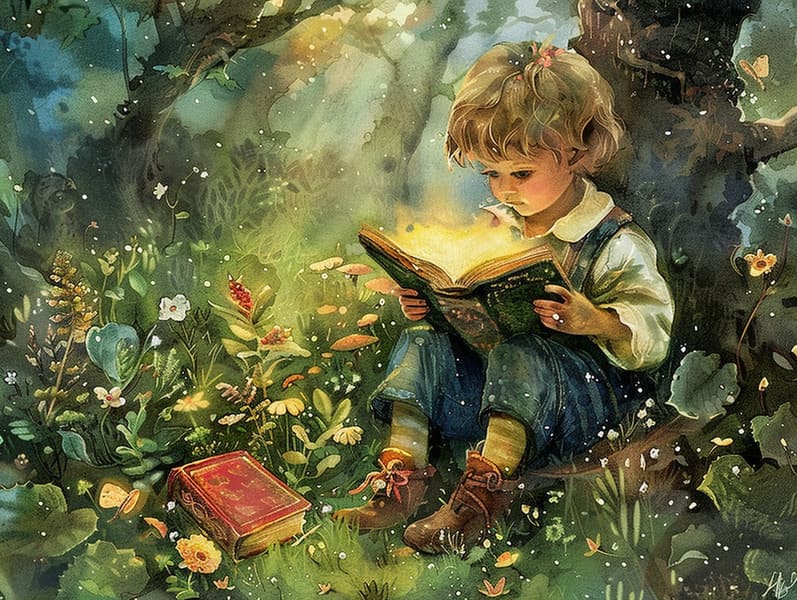The Dawn of Children's Fairy Tales with the Unchanging Beauty.
The Dawn of Children's Fairy Tales with the Unchanging Beauty.
Blog Article

Children's fairy tales have deep roots. These stories have been relayed from one generation to the next centuries before they were ever inscribed. They arose from a variety of backgrounds, including Middle Eastern traditions. They were initially told among adults, often carrying themes and messages related to the societal norms and beliefs of the time.
The renowned Brothers Grimm, Jacob and Wilhelm (the Grimm brothers), were among the first to compile and release many of these beloved stories. Their volume, "Grimm's Story Collection," included classics like "The True Bride," "The Story of Hansel and Gretel," and "Schneewittchen," which have since become mainstays in the world of beloved fairy tales. Similarly, Hans Christian Andersen's delightful narratives, such as "The Story of the Little Mermaid," and "The Ugly Duckling," have touched hearts worldwide, securing their place in the pantheon of beloved fairy tales.
Despite their age, traditional fairy tales remain as important as ever, especially as kids' bedtime tales. These delightful tales are now available in multiple formats, including artistically illustrated books, whimsical animations, and digital storybooks.
Their ongoing significance can be traced to several magical reasons:
Important Morals: Timeless fairy tales often share important moral lessons. Tales like "The Tale of the Boy Who Cried Wolf" teach the significance of truthfulness, while "The Tale of the Tortoise and the Hare" demonstrate the qualities of perseverance and humbleness. These stories offer the young clear distinctions between ethical and unethical, molding their moral compass in a subtle yet lasting way.
Empathy and Understanding: Timeless fairy tales frequently showcase individuals facing obstacles and hardships, motivating listeners to connect with their struggles and applaud their triumphs. For instance, "Beauty's Beast" conveys the necessity of looking past the exterior to recognize the real character of a person, promoting tenderness and comprehension.
Cultural Appreciation: Many ancient fairy tales are deeply ingrained in the cultural contexts from which they were born. Exploring these narratives can provide informative snapshots into different cultures, nurturing a sense of world insight and knowledge.
Imagination and Creativity: The supernatural elements in timeless fairy tales—magical spells—fuel children’s visions. These stories bring readers to extraordinary realms, stimulating fantasy ideas and a sense of excitement that continues a lifetime.
Traditional fairy tales are not only bewitching but also enlightening. They provide mesmerizing tools in developing various cognitive and emotional skills in young ones. When traditional fairy tales are recited, they boost language proficiency by introducing new terms and detailed sentence structures. This practice also boosts auditory perception and attentiveness, as little ones hang on every word, keen to see what happens next.
Furthermore, talking about the themes and characters of timeless fairy tales can cultivate logical thinking and analytical skills. The young learn to recognize patterns, forecast, and comprehend cause and effect. These discussions also further kids articulate their thoughts and feelings, contributing to their emotional intelligence.
In today’s modern era, the prevalence of web-based fairy tales has made these fairy tales more info more accessible than ever. Internet sites and software provide comprehensive collections of timeless fairy tales that can be experienced or listened via anytime, anywhere. Fairy tales recited are particularly well-received, featuring an entertaining method for kids to engage with these bewitching tales. Read-aloud books and read-aloud videos carry characters and settings to life, often augmented by entrancing harmonies and tunes that elevate the tale experience.
The unfading fascination of ancient fairy tales lies in their ability to modify to present eras while staying true to their underlying messages. Contemporary modernizations of these tales often present more different figures and modern settings, making them accessible to today’s audience. However, the fundamental themes of valour, empathy, and impartiality remain unchanged, continuing to reach readers of all ages.
Old fairy tales also offer a sense of security and knowability. They showcase a well-structured narrative with a distinct beginning, middle, and end, often ending with the solving of conflicts and the triumph of truth over falsehood. This dependability can be relieving for young readers, spreading a sense of dependability in an constantly changing world.
Traditional fairy tales continue to bewitch and inform new generations, maintaining their enchantment and significance in modern society. As bedtime stories for kids, they afford a perfect blend of fascination and comprehension, advancing moral values, empathy, and creativity. The prevalence of internet fairy tales and the well-liked nature of fairy tales read out loud promise that these old fairy tales remain attainable to new generations.
By safeguarding and making known these narratives, we continue to recognize the rich tapestry of narrative artistry and cultural heritage. Whether you are exploring a gorgeously illustrated book, enjoying a internet library, or hearing an sound book, the majesty of classic fairy tales is always within reach. These stories remind us of the ageless ability of stories and its ability to draw us together across epochs and places.
No matter if you are discovering a gorgeously illustrated book, seeing a electronic collection, or listening via an voice book, the allure of traditional fairy tales is always within reach.
These stories convey of the unceasing influence of storytelling and its ability to bind us across generations and cultures, making a tie that fascinates and enlightens alike.